Images taken from Mars have led many scientists to speculate that there was life there in the past.
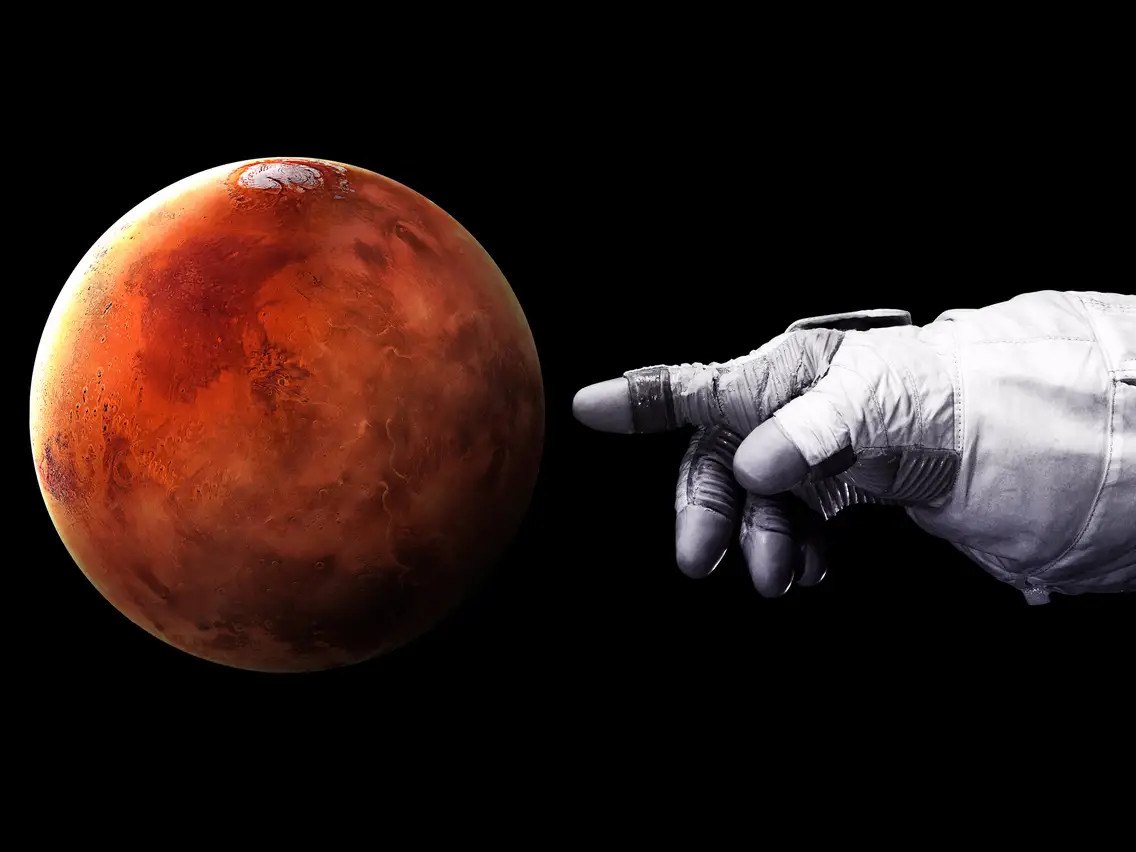
Mars is the closest planet to Earth in the Solar System. Many scientistsscienceIt has been argued that Mars may have been habitable in the past. Therefore, many images speculate about life on this planet.
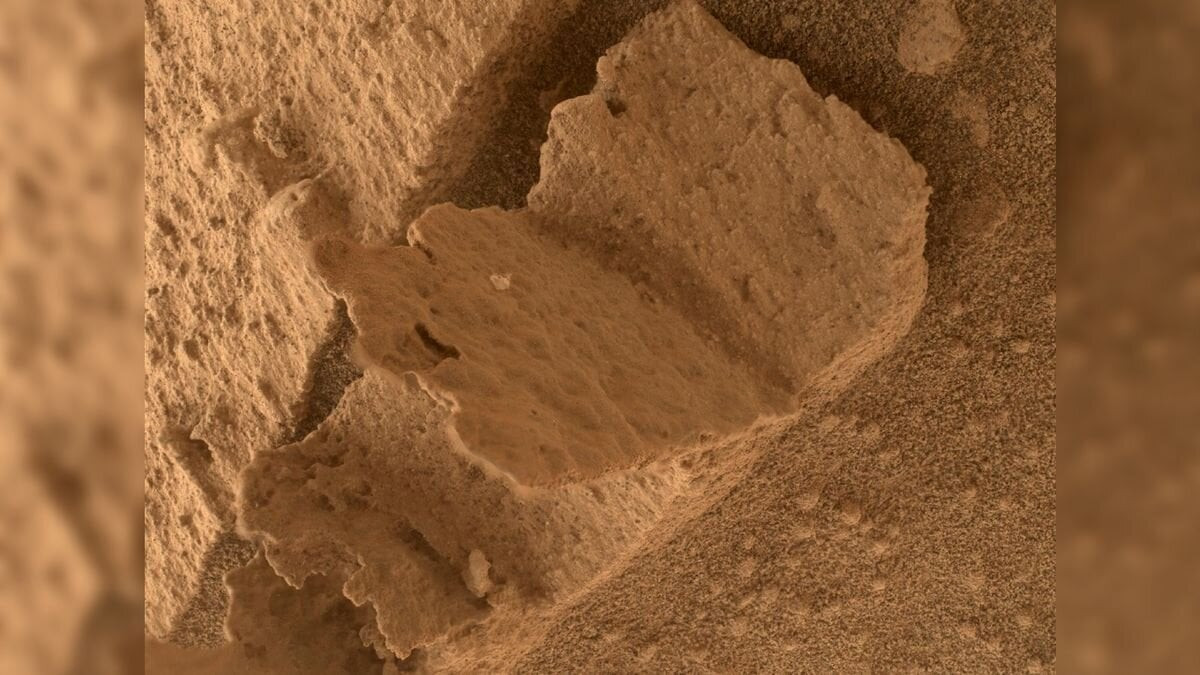
NASA's Curiosity rover took a short break in April 2023. At that moment, the rover unexpectedly found an old hardcover book buried in the dust of an important Martian geological layer called Gediz Vallis. While the strange object may look like a book with a frozen page in the middle, it is actually just a piece of upright rock resting on a small boulder.
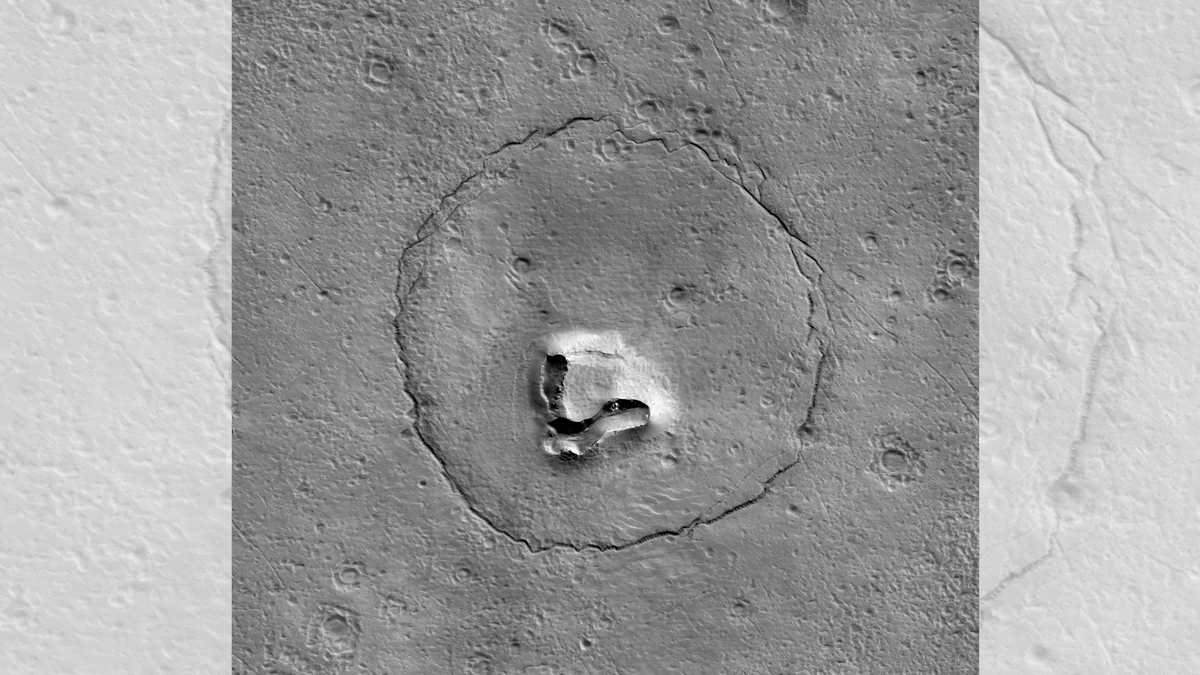
In a widely shared image from January 2023 by the University of Arizona, the face of a giant teddy bear is imprinted on the surface of Mars. The structure, complete with beady eyes, a hole in its nose, and a hollow frog mouth, grins at the camera lens of NASA's Mars Reconnaissance Orbiter (MRO). However, according to the University of Arizona, the adorable shape may just be a geologically dissected hill at the center of an ancient crater.
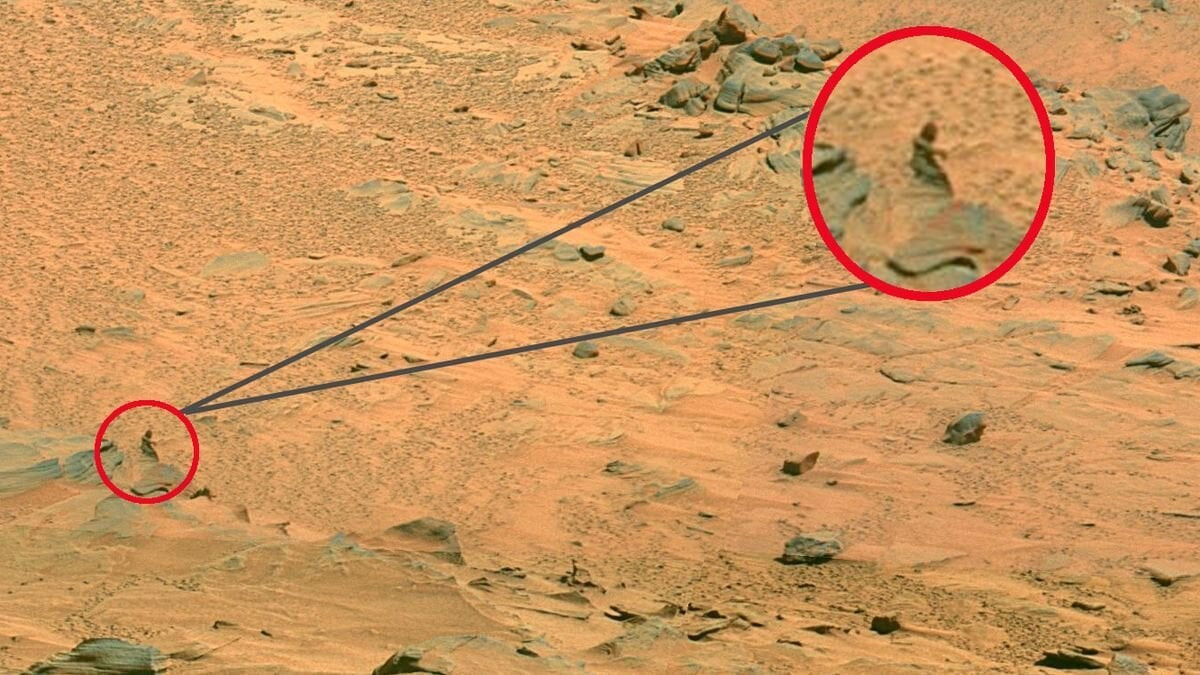
In 2007, the Spirit Mars rover captured a rather interesting sight on the Red Planet, with what appeared to be a robed figure kneeling in prayer, as Spirit captured a panoramic view of a plateau called Home Plate, located in the inner basin of Gusev Crater. Of course, the so-called “person” in this image is simply a rock whose appearance is very easy to capture the human imagination.
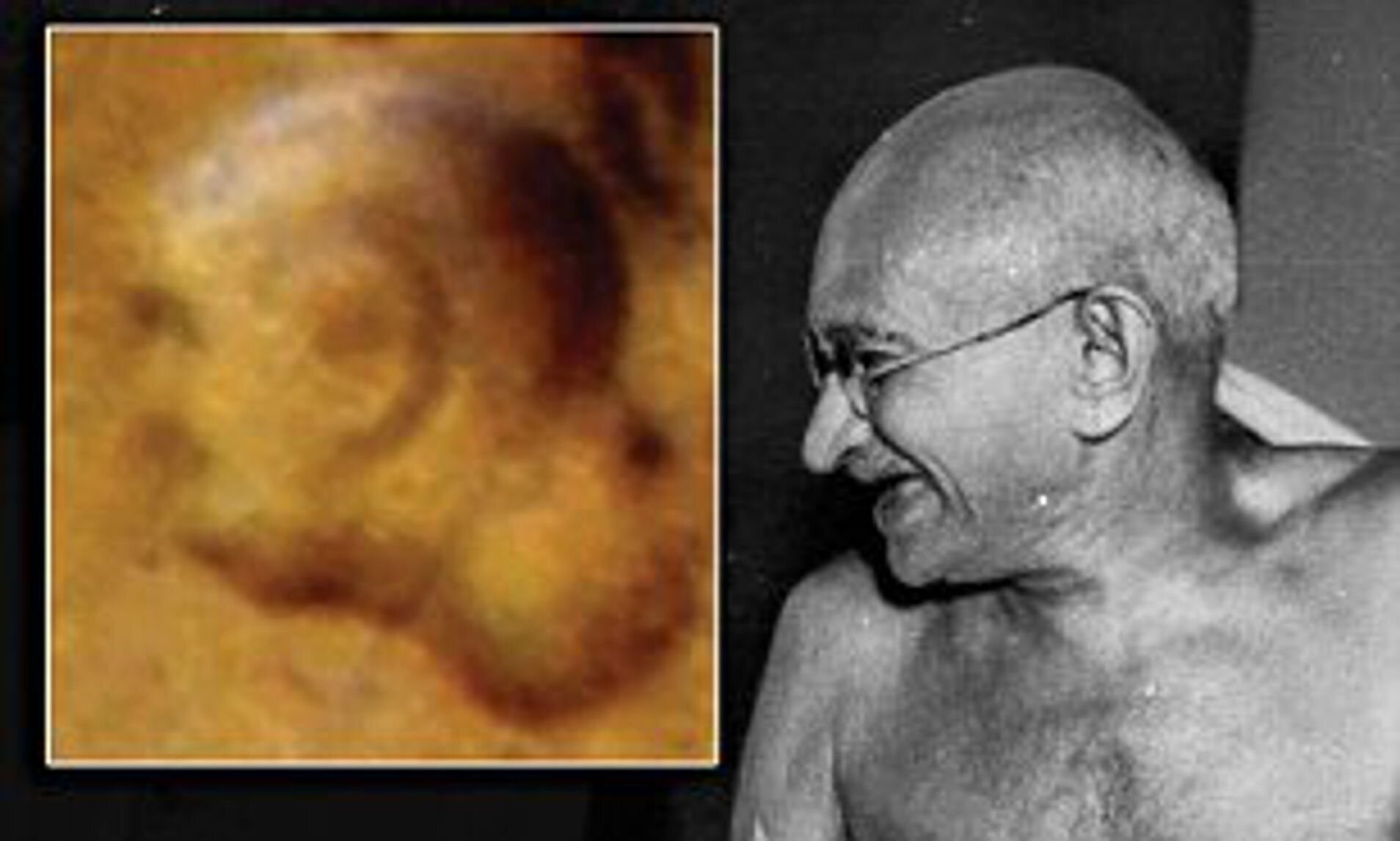
With the launch of Google Mars in 2009 (a mapping program created from composite satellite images of Mars), users can look around the surface of the Red Planet, finding all sorts of interesting geological structures.Italian man Matteo Ianneo discovered astrange bump. This person said that the bulging object looked like Indian independence activist Mahatma Gandhi, who was assassinated in 1948.
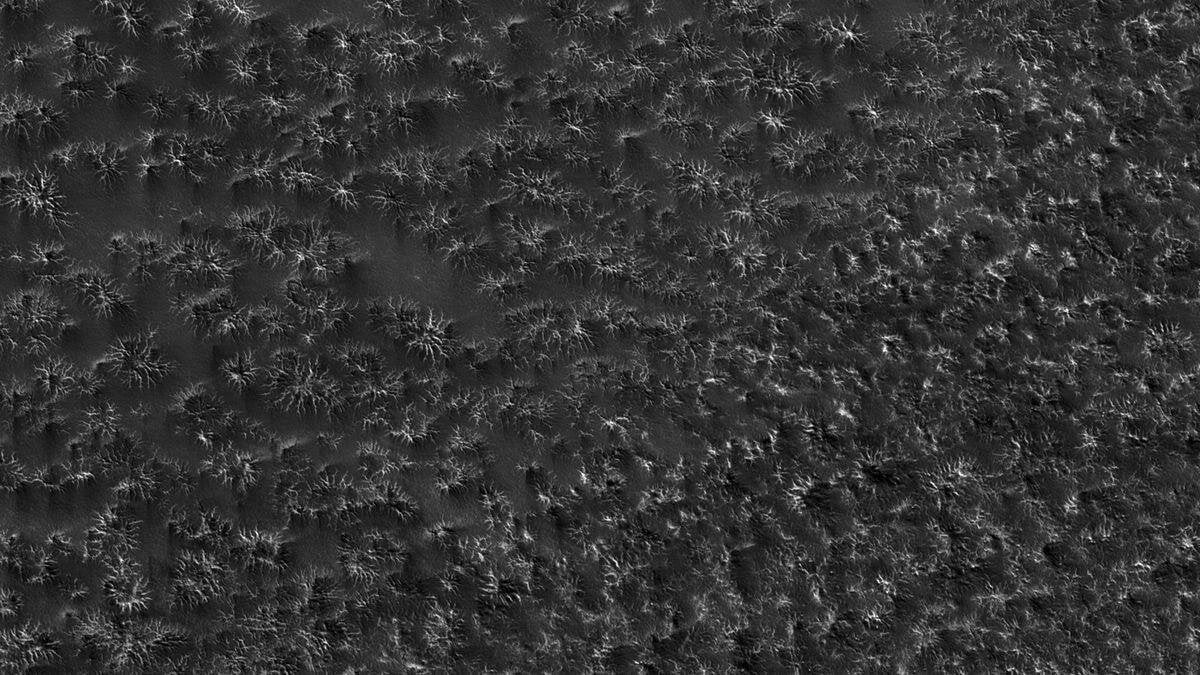
In 2001, seven years before his death, famed science fiction writer Arthur C. Clarke, co-author of “2001: A Space Odyssey,” claimed to have spotted patches of vegetation, including trees, in a photo of Mars. “I’m quite serious about this, take a good look at this image of Mars,” Clarke said at the time, speaking by telephone during the Wernher von Braun Memorial Lecture series at the Smithsonian National Air and Space Museum.
“There’s something that’s actually moving and changing with the seasons, at least I’d like to suggest a Martian vegetation,” Clarke added. This argument has since been disputed, with some suggesting that they’re the result of seasonal melting of the carbon dioxide (CO2) ice caps that exist at the Martian poles. As the CO2 sublimates into gas, some of it becomes liquid before evaporating, flowing out in branching lines, as this image shows.
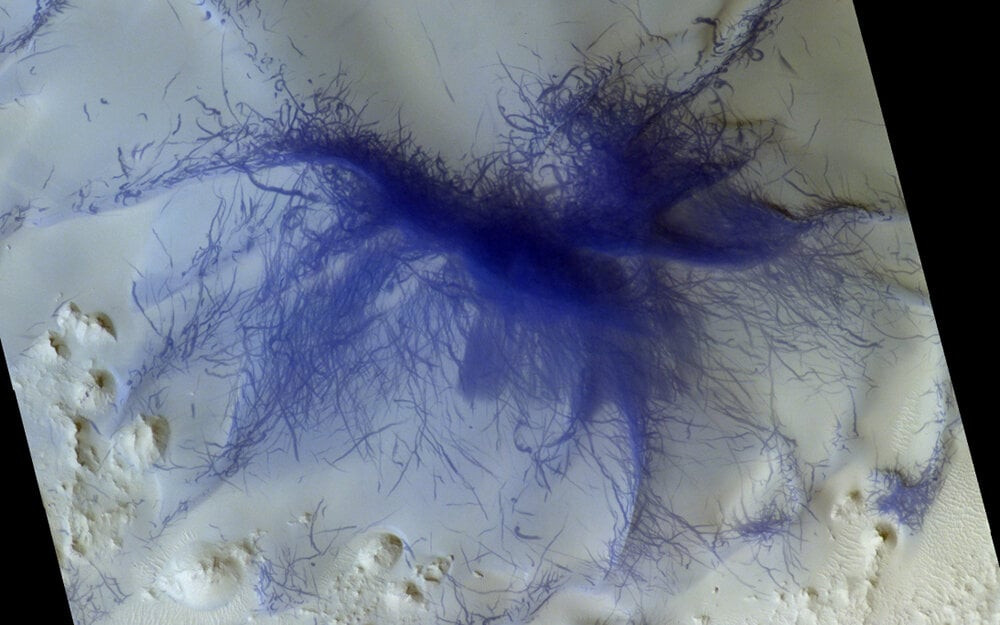
This image, taken by a European Space Agency (ESA) orbiter in 2019, appears to show a giant hairy spider striding across a Martian mountain. In fact, those spindly “legs” are the main path for hundreds of tiny tornadoes, or dust devils, that converge across the geological slopes of the region. It’s just not clear why this area is such a hotbed of dust devils.
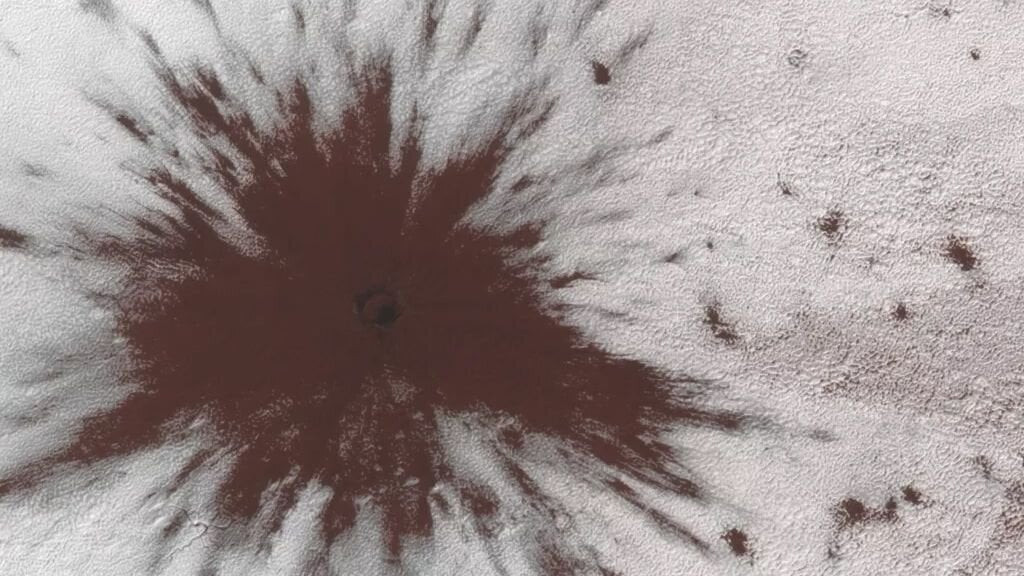
Sometime between July and September 2019, a space object—possibly a meteor or comet fragment—hit the southern ice cap of Mars and punctured the thin ice, sending a shower of reddish-brown dust flying. The resulting dark reddish-brown patch looks like a cartoon character running straight into a wall. The image was taken by NASA’s Mars Reconnaissance Orbiter, and the reddish-brown dust trail is about 1km across.
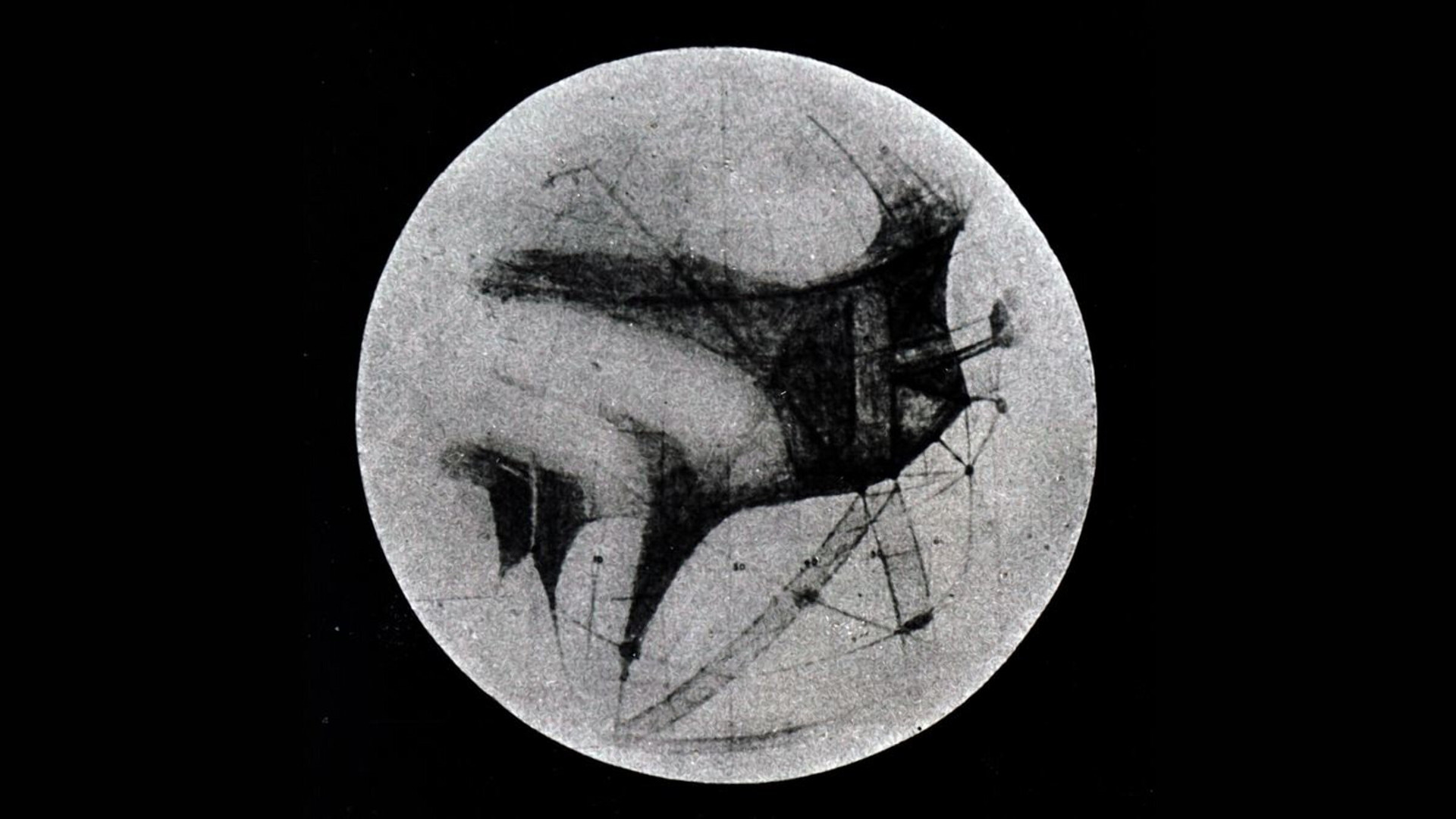
During Mars' close approach to Earth in 1877, Italian astronomer Giovanni Schiaparelli looked through his telescope and observed grooves on the surface of the Red Planet. This led many to conclude that Mars had some intelligent life that had built this special system of waterways. But this theory was debunked in the early 20th century, when it was shown that the "channels" were just optical illusions. When viewed through a poor quality telescope, features that resemble mountains and craters on Mars appear to be connected by dark, straight lines, as shown in the image.